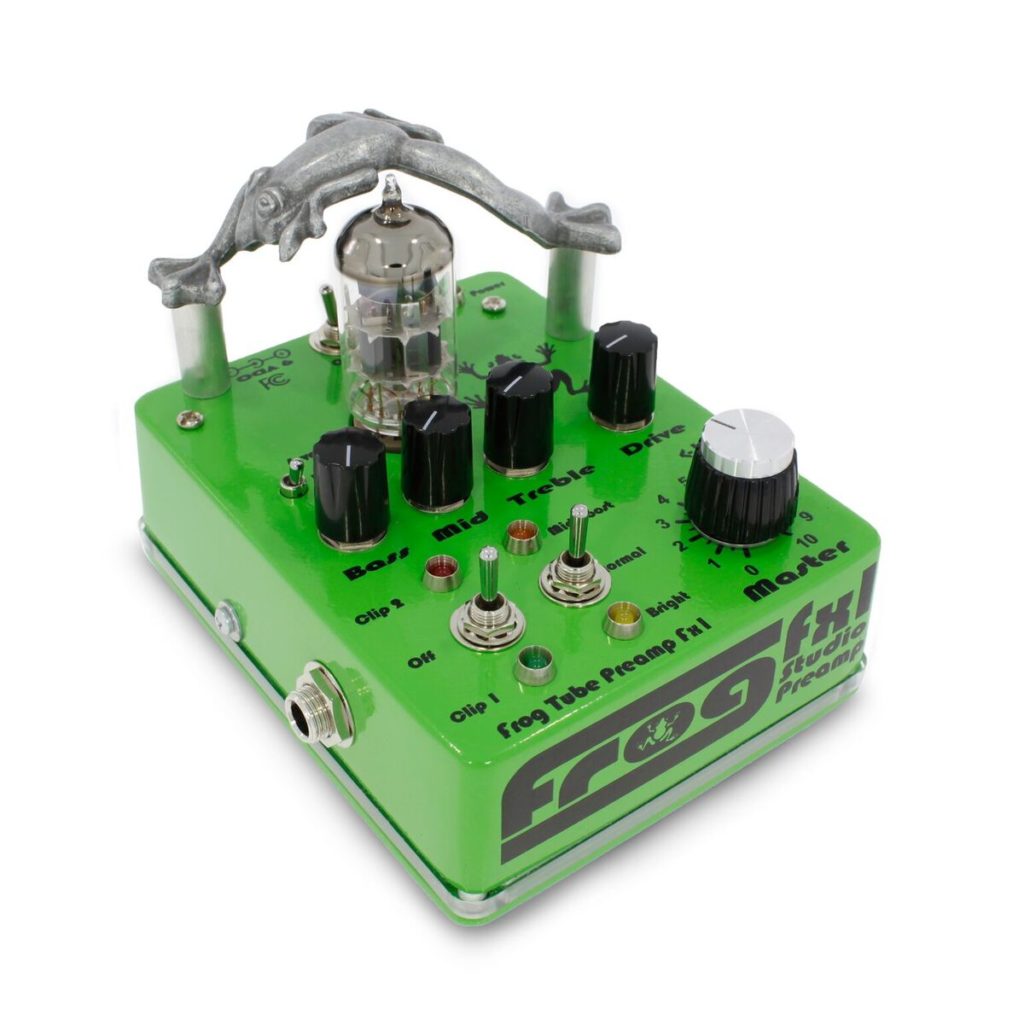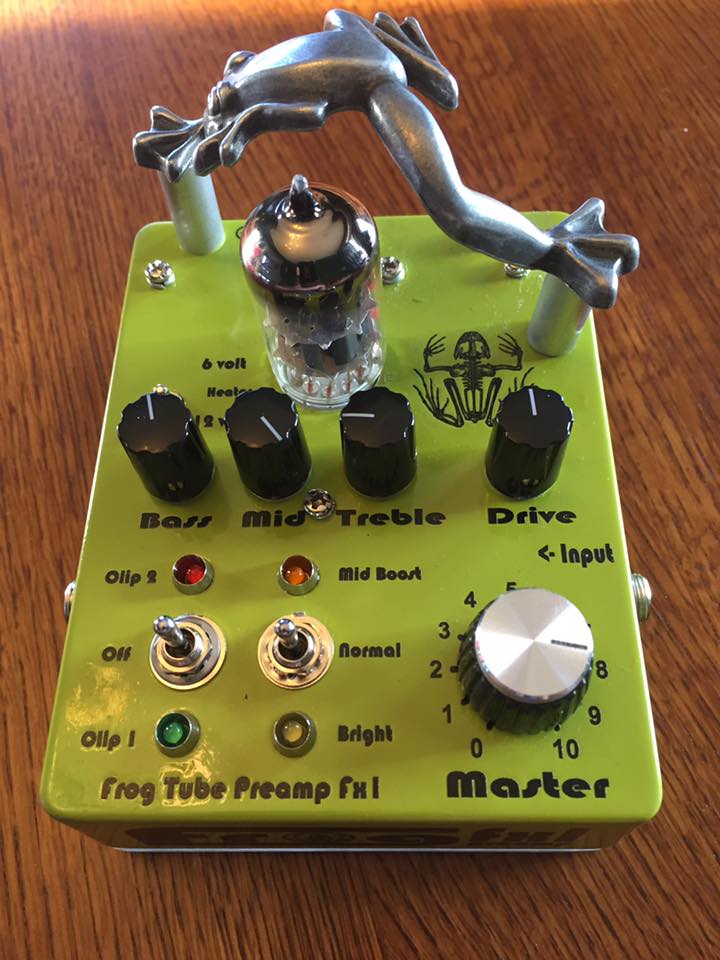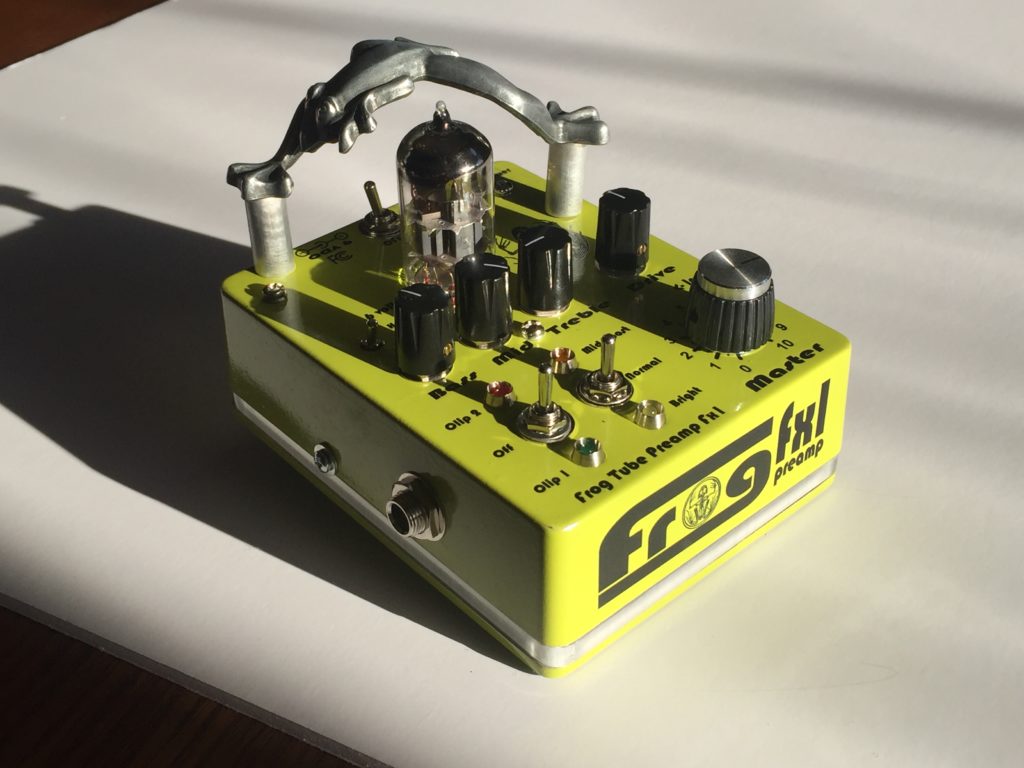Can I really use the same preamp for Bass or Guitar…..?
Can I really use the same preamp for Bass or Guitar…..?


In the case of the Frog Fx1 tube preamps, absolutely. It is being used around the world for guitars and bass guitars with excellent results. In fact, it has been used for pedal steel guitars, lap steels and some Alembic F2b preamps are used for string instruments (I don’t know if the Frog is yet, but there is no reason it couldn’t!). I have also used it with my acoustic guitar with a Piezo pickup installed.
It is being used to create the bass sounds of a Disney musical that runs 8 shows a week in Hamburg, Germany. It is also being used to create the ethereal sounds for David Gilmour/Pink Floyd tribute bands in The Hague, Netherlands and Illinois, USA as well as many other bands all across Europe, USA, Canada and even some in Japan. There are about 200 of these “Frog” type preamps all over the world, that are either using my DIY Frog 2.0 and 2.1 tube preamp PCBs that have been built by gutsy DIY’ers or complete, hand-built units built by Mark Price in his little shop in Sibley, MO (a distant suburb of Kansas City, Missouri, USA).
How can a preamp for guitar be used for bass or visa versa?
The beauty of this preamp design is that it is a full-range preamp and has EQ for Bass, Mid and Treble. The Studio version and the Ruggedized version both have a Mid Boost and Bright switch. The Mid Boost is unique to the Frog compared to the Alembic F2b only having a bright switch. With the full range of controls and various ability to boost mid or high frequencies, you have all the tools you need to dial in your sound as illustrated by the range of users of the Frog Fx1. There are probably many preamps that aren’t crippled for use for one type of instrument or another, I just hope you will consider the Frog Fx1. Soon, I hope to create a more Bass centered preamp, however, even it will have full range capabilities but will have some specific features that Bassists need more than others.
Another unique feature of the Frog Fx1 Studio or Ruggedized tube preamp…
A while back, I had a band member that brought in a KLON Centaur and used it in front of his Fender guitar amplifier and I fell in love with the overdrive sounds that the KLON could make. I decided I would add two switchable clipping options to my preamp. I say it is based on the KLON Centaur, not because I added a solid state operational amp, or used the same diodes to get the clipping, it is because I placed the clipping section at a similar place in the circuit as did the KLON. That is, right after the first preamplifier stage. One of the clipping options offers a more “overdrive” sound, and the other is more of a “fuzz” sound. It is all very dependent on the type of pickup and how hard the pickup is driving the first preamp section (attack). The clipping feature is probably more useful for a guitar compared to bass guitar. There is one user, Patrick from Ohio, that recently stated: “ …I didn’t think I would find the clipping circuit useful and it may be my favorite feature….I believe it’s (the preamp) going to be more versatile than I had originally thought….ITS REALLY WONDERFUL. I want to integrate it full time into my pedalboard.”
So, sound is in the “Ear” of the individual, but I have to say, time has proved that the Frog Fx1 is extremely versatile and can be used for any instrument with a pickup.
Go to frogpedals.com to look at your options or join us on http://www.facebook.com\frogpedals for more up-to-date commentary and activities around the Frog product line.
Can I really use the same preamp for Bass or Guitar…..? Read More »


 e a little bit of fuzz or overdrive tone to the preamp. I was familiar with the Klon Centaur that was designed in the 1990’s and had built a clone of the circuit and liked the mild overdrive tones it gave me with guitar. So, I researched the circuit diagram of the Klon Centaur (it is not tube based) and found where Bill Finnegan placed the pair of clipping diodes in the circuit. They were right after the first opamp buffer stage and Bill only included one clipping setting. So having found where they were placed, I tried placing the clipping diodes right after the first preamp stage of the Frog Fx1 (there are 2 preamp stages in the Frog Fx1) and found that they worked great in that position. There were a couple different types of diodes I liked that gave distinctly different clipping characteristics so I added 2 different clipping options. One is more of a mild overdrive and the other is a mild fuzz/distortion tone. They are very touch sensitive, so their influence on the sound is related directly to the output/string attack of the instrument used. I am sure there are many more that would sound great, but I only had so much room on the PCB.
e a little bit of fuzz or overdrive tone to the preamp. I was familiar with the Klon Centaur that was designed in the 1990’s and had built a clone of the circuit and liked the mild overdrive tones it gave me with guitar. So, I researched the circuit diagram of the Klon Centaur (it is not tube based) and found where Bill Finnegan placed the pair of clipping diodes in the circuit. They were right after the first opamp buffer stage and Bill only included one clipping setting. So having found where they were placed, I tried placing the clipping diodes right after the first preamp stage of the Frog Fx1 (there are 2 preamp stages in the Frog Fx1) and found that they worked great in that position. There were a couple different types of diodes I liked that gave distinctly different clipping characteristics so I added 2 different clipping options. One is more of a mild overdrive and the other is a mild fuzz/distortion tone. They are very touch sensitive, so their influence on the sound is related directly to the output/string attack of the instrument used. I am sure there are many more that would sound great, but I only had so much room on the PCB.